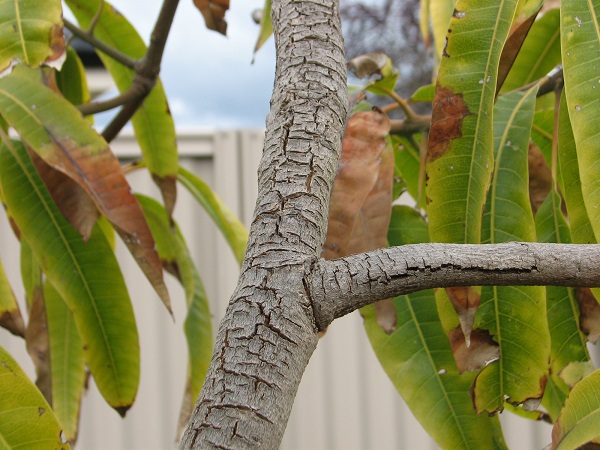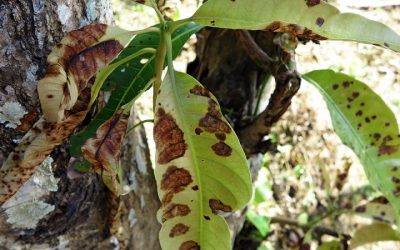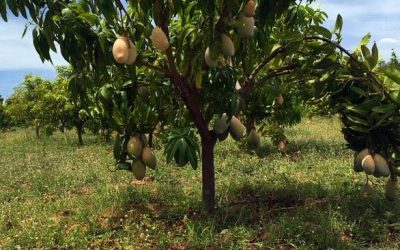Why Mango trees may crack

A large, tropical tree, mango (Mangifera indica) can suffer cracks in its trunk from poor growing conditions or disease. Treating a mango’s cracked trunk helps prevent disease from entering or spreading in the tree.
Weather Woes: Extreme weather conditions can cause a mango tree to develop cracks in its trunk. A young mango tree can suffer severe damage, such as split bark, if temperatures fall below 30 degrees Fahrenheit, and a mature tree can withstand 25 degrees Fahrenheit for only very short periods. Protect a mango tree during a cold snap by wrapping foam or straw around its trunk and securing the material in place with twine. Placing lights under the tree’s canopy or using an orchard heater also provides protection from cold temperatures. Dry weather followed by wet weather also can cause cracks in the trunk because the bark dries out and then the tree swells as it draws water. Also, exposure to hot sunlight can scorch the bark and cause splitting. Placing a tree wrap around the mango’s trunk will prevent sun scorch.
Fertilizer Problems: A mango tree fertilized after midsummer can develop cracks in its trunk. The tree requires regular applications of nitrogen fertilizer, but fertilizer applied late in the growing season promotes young growth that’s sensitive to winter temperatures. As soon as new growth appears on the tree in spring, apply a slow-release, 6-4-6, granular fertilizer at a rate of 1 cup per 24 square feet of ground under the tree’s canopy, but avoid the trunk. Rake the granules into the top 1 to 3 inches of soil, or apply the fertilizer according to its manufacturer’s instructions. The fertilizer should be reapplied every four to six weeks until midsummer.
Disease Difficulties: Disease also can cause cracks in the trunk of a mango tree. Phytophthora gummosis symptoms include small cracks oozing sap, giving the tree a bleeding appearance. Heavy rain washes away the sap. Then when the bark dries, it cracks and falls off, and over time the cracks grow larger, finally encircling the trunk. The tree’s death may occur within one or several years. Removing infected areas and keeping the bark as dry as possible, such as by moving sprinkler heads, can cure or slow the spread of the disease.
Cutting Cures: The bark around a crack in the mango’s trunk should be cut away. Sterilize a sharp knife by dipping it either in 1 part household bleach mixed with 10 parts water or in a 70-percent alcohol solution, and use the knife to cut a line in the healthy bark 1/2 to 1 inch from one edge of the crack, working from the crack’s top to its bottom. Sterilize the knife blade again, and cut a line on the crack’s other side to join the top and bottom of the first line. Remove the bark inside the lines, and sterilize the knife again after its use. The tree should form a callus and heal with time. Tree wound paints aren’t an effective treatment for cracks in mango tree bark.


